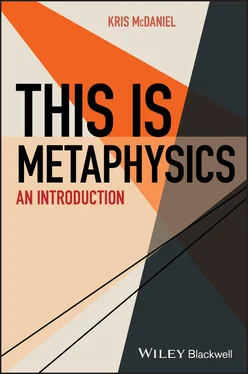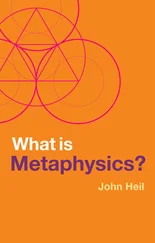1.19 Consider, for example, the practice of classifying persons on the basis of race. Many scientists believe that racial classifications are not backed up by the biological facts. 5 Consider, for example, how a parent classified as belonging to one race can have a child classified as belonging to another race. The parent and child will likely have more biologically in common with each other than they would with other members of “the same race.” But as any student of the history of racism is aware, people discriminated on the basis of race because they thought that “racial classifications” grouped people into collections that objectively belonged together. 6
1.20 If this is correct, then racial classifications are very subjective in the sense described earlier: racial classifications are based on contingent features of societies rather than on genuinely important objective features of the world. This seems to be a view that most people who accept the idea that race is socially constructed accept, though many augment this basic position with other philosophical theses.
1.21 Some philosophers have argued for an even stronger conclusion: there are no races. This is the position defended by the philosophers Kwame Anthony Appiah and Naomi Zack, among others. 7 We’ll call this position race eliminativism . Here are the basic ideas behind race eliminativism: not all attempts at classifying entities are guaranteed to succeed. Sometimes we introduce terms to stand for groups that we initially take to objectively belong together—but because they don’t objectively belong together, we actually fail to classify things with those terms. Here’s an uncontroversial example of a failed attempt to classify people. A while ago, certain women were thought to have magical powers and were persecuted as a consequence. These persecuted women were called “witches.” According to their persecutors, not all women are witches—just those who have important characteristics in common, specifically magical abilities. The people who labeled these women “witches” thought that the women they persecuted objectively belonged together. But since there aren’t magical powers, the persecutors’ attempt to classify these women together was a colossal failure. The lesson we learn from their failure is that while there might be women who were thought to be witches, there really are no witches. Similarly, according to race eliminativism, when words that allegedly refer to races were first introduced, the people who introduced these words thought that there were really important and deep biological differences between human beings, and on the alleged basis of these differences, they attempted to objectively classify people. But these differences have proven to be either non‐existent or merely superficial. So, the attempt to objectively classify individuals on the basis of race is a failure just like the attempt to objectively classify individuals as witches. And so, according to race eliminativism, just as we learned that there are no witches, we should also conclude that there are no races.
1.22 One of the key theses of race eliminativism is that classification by race is intended to be an objective classification. And since this intent failed, the attempt to classify via race fails too. And so, there are no races. But if race eliminativism is true and there are no races, why do people talk as if there are? It is important to keep in mind the distinction I noted earlier, between two sorts of classification: one that is based on whether things objectively belong together and the other that is based on more subjective reasons. Probably the full explanation for the prevalence of classifying people on the basis of “race” will be understood only once we have better grappled with both the historical and contemporary reality of various forms of racial stratification and oppression. The fact that we do classify for subjective reasons might generate the appearance that there are races even though, according to race eliminativism, there really aren’t any.
1.23 This is not to say that there are no biological bases at all for apparent racial differences. There is a biological explanation for why, for example, two people have different skin colors. But the existence of these sorts of explanations doesn’t mean that classification on the basis of races is particularly objective. Here’s an analogy to consider. Suppose that instead of thinking of people in terms of “races” we thought of people in terms of “heights.” People under 5’ tall were called “the lows”; people 5’ to 5’2” were called the “low mids”; people 5’2” to 5’6” were called “the mids”; and so on, and so on. Presume, in this other possible culture, that what height you belonged to mattered as much as race sometimes seems to matter in our culture. (Suppose, for example, that there was systematic discrimination against the lows.) Clearly, these classifications of people in terms of height are much more subjective than objective, even though in each case there is going to be a biological explanation for why a person is of a given height.
1.24 Race eliminativism isn’t the only position in the philosophy of race. It’s a rich and varied field, like all areas of philosophy! Recently, the view that races are biologically real has been defended in a series of interesting papers by Quayshawn Spencer, who argues that, at least in the United States, racial classifications correspond to five global population groups corresponding to genetic clusters. 8 On Spencer’s view, dividing the human population into these five groups results in genetic clusters that minimize genetic differences among individuals within a group but maximize genetic differences among individuals from different groups. Spencer clearly notes, however, that these genetic differences do not imply any moral or intellectual differences between the groups. (There are some suggested readings at the end of this chapter for those of who you wish to pursue topics in the philosophy of race more.)
1.25 Let me briefly sum up what has been discussed so far. We’ve explored two kinds of classification systems: those that classify on the basis of our subjective interests, feelings, and whatnot, and those that attempt to classify things on the basis of whether the things in question objectively go together. We’ve seen that we can make mistakes about whether some things objectively go together, and that some of these mistakes can even be very harmful. We discussed classification by race as an illustration of one way this might happen.
1.26 But the fact that we can and often do make mistakes about what things objectively go together shouldn’t by itself automatically make us skeptical that nothing really objectively belongs with anything else. In order to get us to be skeptical across the board about the possibility of objectively classifying entities, we’d need a much more powerful argument than one that begins with the premise that we often screw it up (and that we are really bad at it when it comes to classifying people). On the other hand, it would be nice to have a positive argument for the conclusion that some things really do objectively belong together. We will discuss one such argument in the following section.
1.4 Do Things Objectively Belong Together?
1.27 One of the most obvious ways in which we classify things is by using language. We make use of general terms, such as “dog,” “cat,” and “table” to group things together under common headings. Once we’ve done this, we can use these terms in sentences that communicate very general facts, such as that dogs typically are furry and friendly. In addition to terms like “dog” and “cat” that seem to stand for kinds of things, we can also classify things by way of predicates like “red” and “circular.”
Читать дальше












